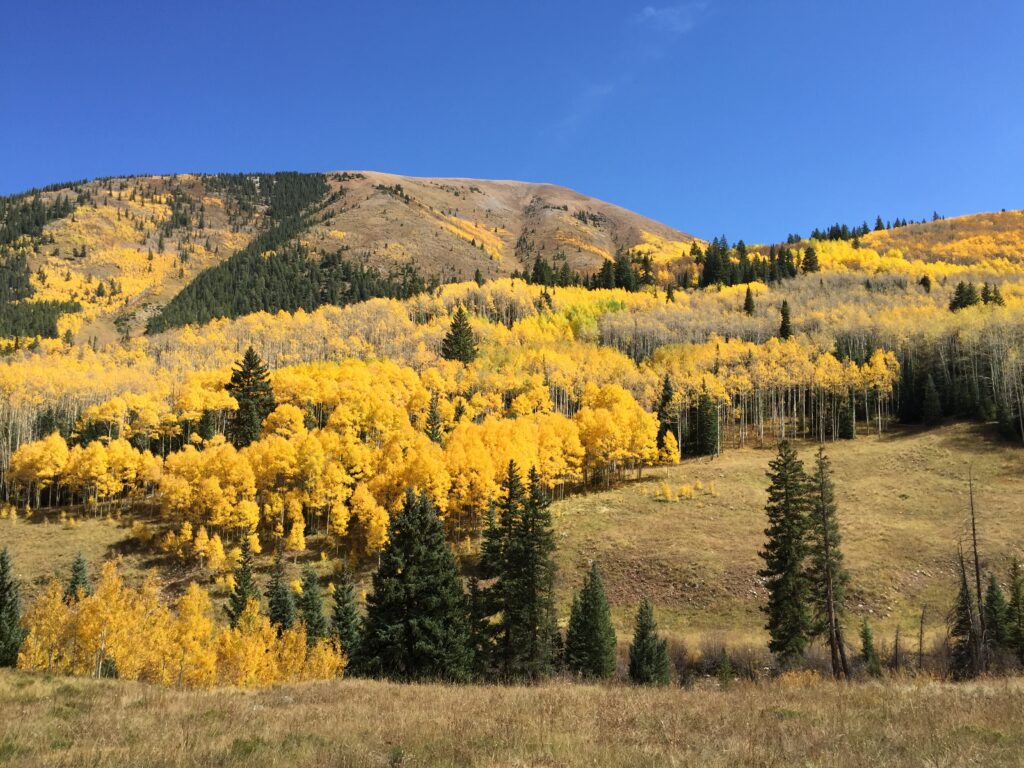…And How to Get That Perfect Picture with Your Family
Leaf peeping season is kind of like mountain Mardi Gras: whether you live down in Denver or up in Evergreen, there is a frenzy over finding the best places to see fall colors in Colorado, catching the leaves at the peak of their gold. This is such a big that there are even apps that track the changing of the leaves throughout the state (Explore Fall is a good site as is the Open Snow app). While the northern parts of Colorado experience the change first, the Evergreen area is pretty consistently the last week of September and first week of October. And everyone has their favorite spots, so I’m going to share some not-a-secret-at-all “secret spots” for aspen peeping.
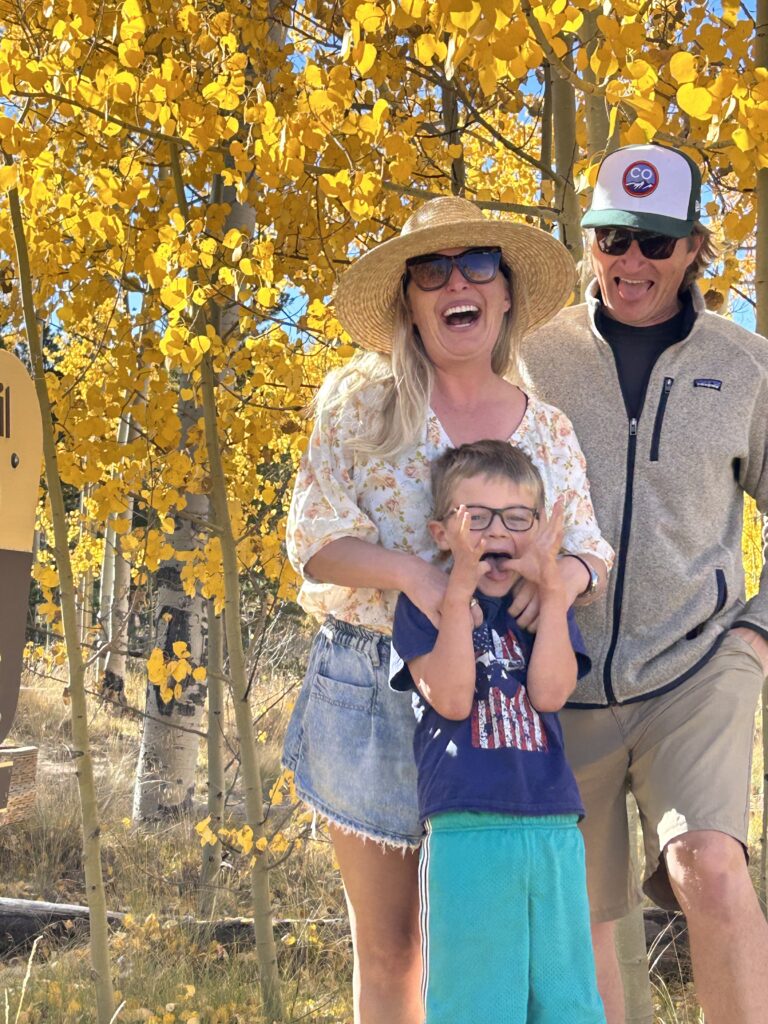
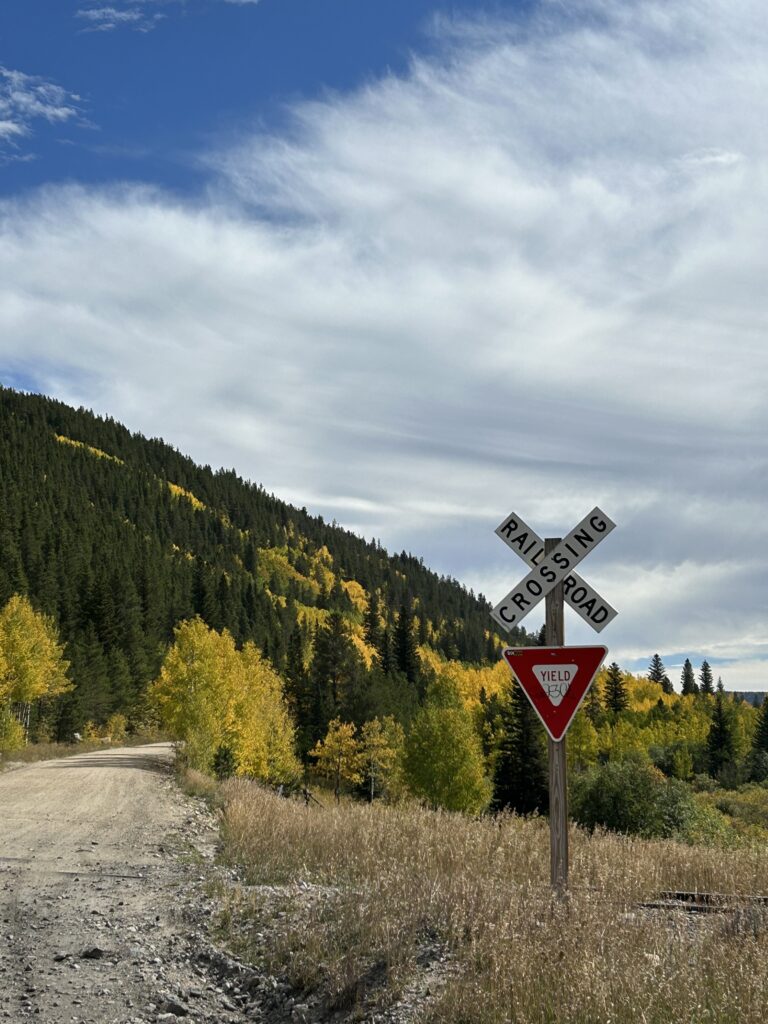
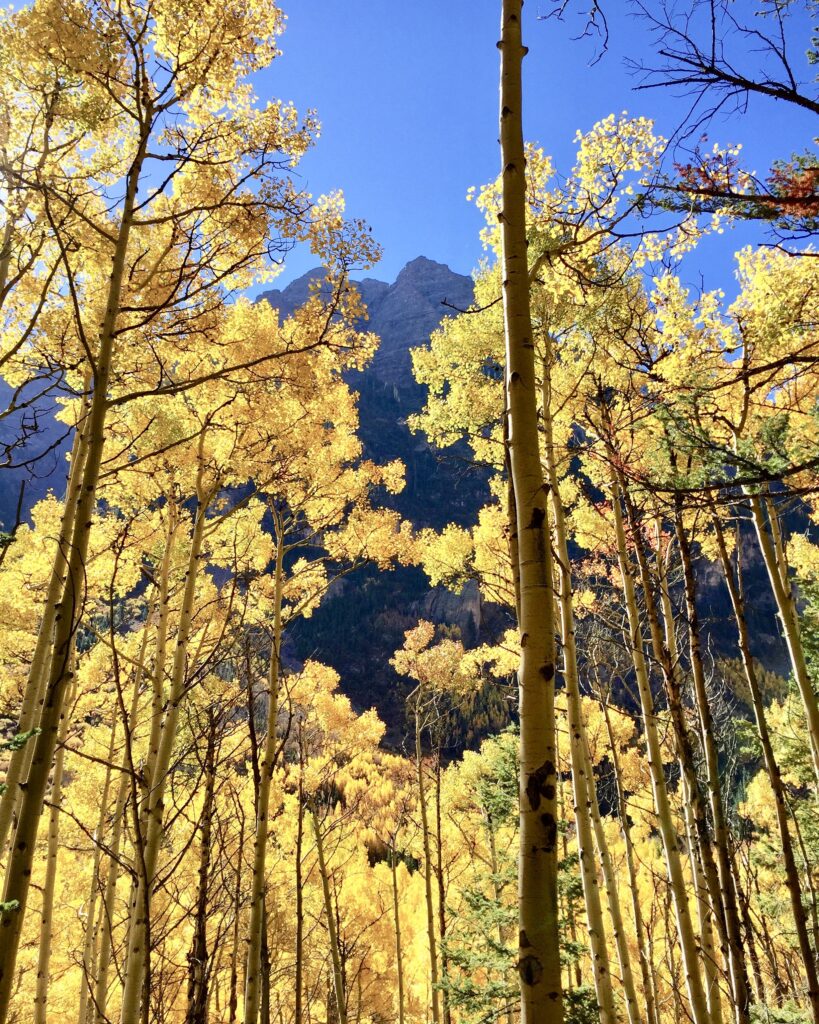
Guanella Pass connecting I-70 to 285 is a VERY popular drive you can take with 100,000 of your friends from the Front Range. The benefit of this scenic drive is that there are PLENTY of spots along the way to stop and take in the views; you might even get lucky and see the moose who love to hang out in the wetlands at the base of Mt. Bierstadt.
Mestaa’ėhehe Pass (Hw 103) is also a nice option literally at Evergreen’s back door. If you want to see a parade of families wearing matching white shirts and khakis trying to get the perfect Christmas card picture with children bored out of their minds, then the intersection of Witter Gulch on Hw 103 is your spot. I admit…it is pretty priceless aspen AND people watching. I must applaud these families though…they come prepared with their professional photographers and some even stay for a nice picnic in the field once they get their money shot.
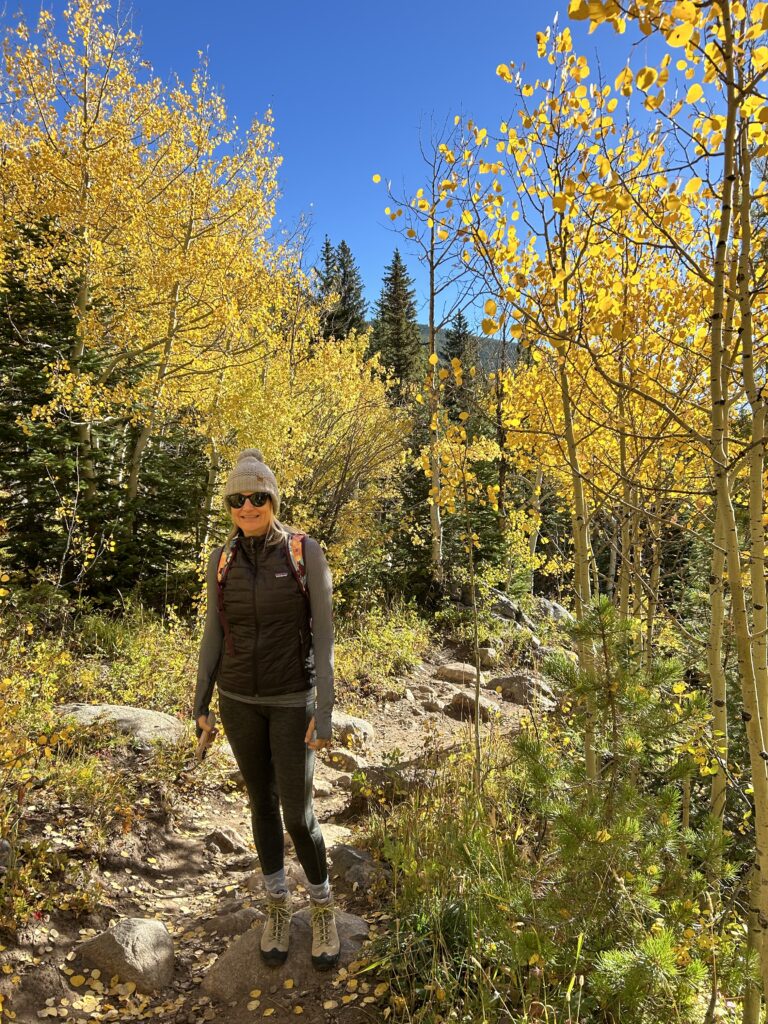
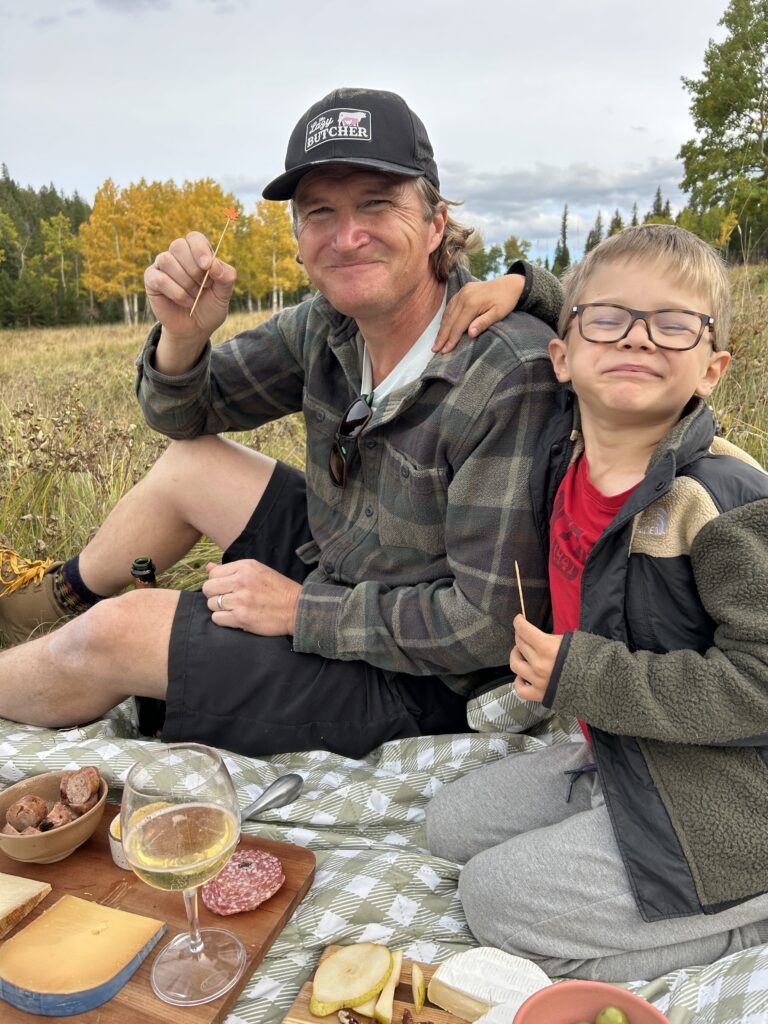
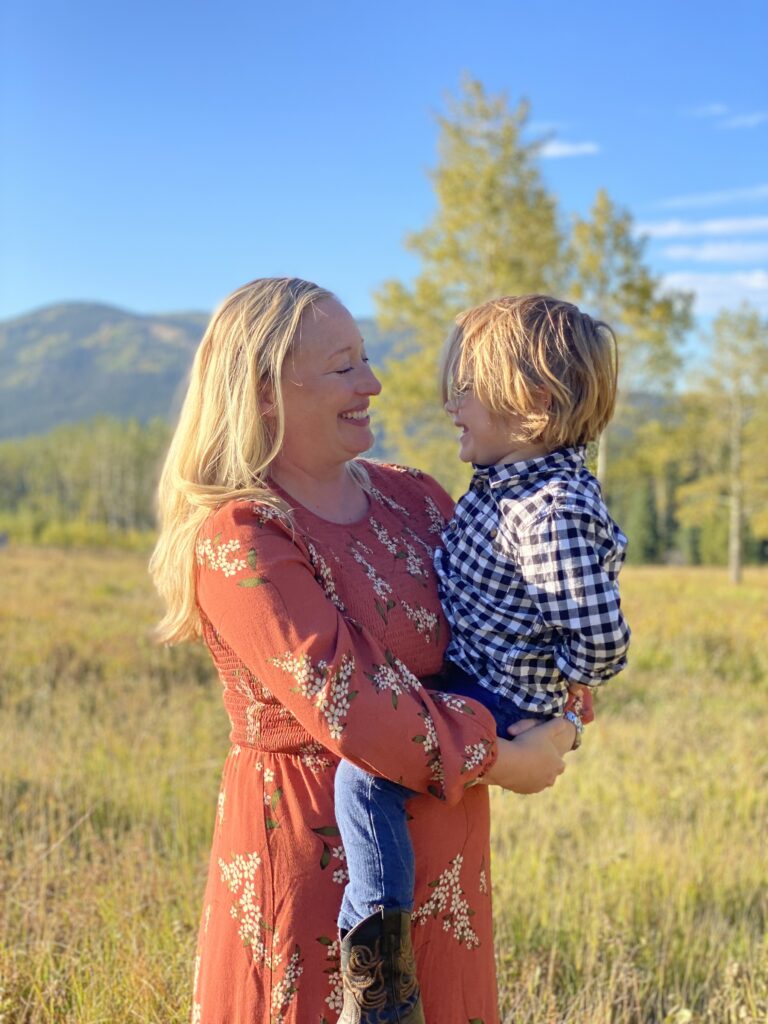
Next up, we have the Peak to Peak Scenic Byway essentially connecting Evergreen to Black Hawk and Nederland. I have a particular affinity with this option, perhaps because of all the historic barns, buildings (and graveyards) along the way. My particular favorite location is Rollinsville where you can drive all the way to the Moffat Tunnel and can catch the train roaring through. If you are looking for something a bit more private, bring your hiking boots and head up to Crater Lakes or Forest Lakes for some exercise AND a private viewing of the aspen gold. If you’re willing to make the push, you can drive all the way to Nederland for mini donuts served out of an old Buffalo Bill train car or some of the best dry rub wings in the state at Busey Brews.
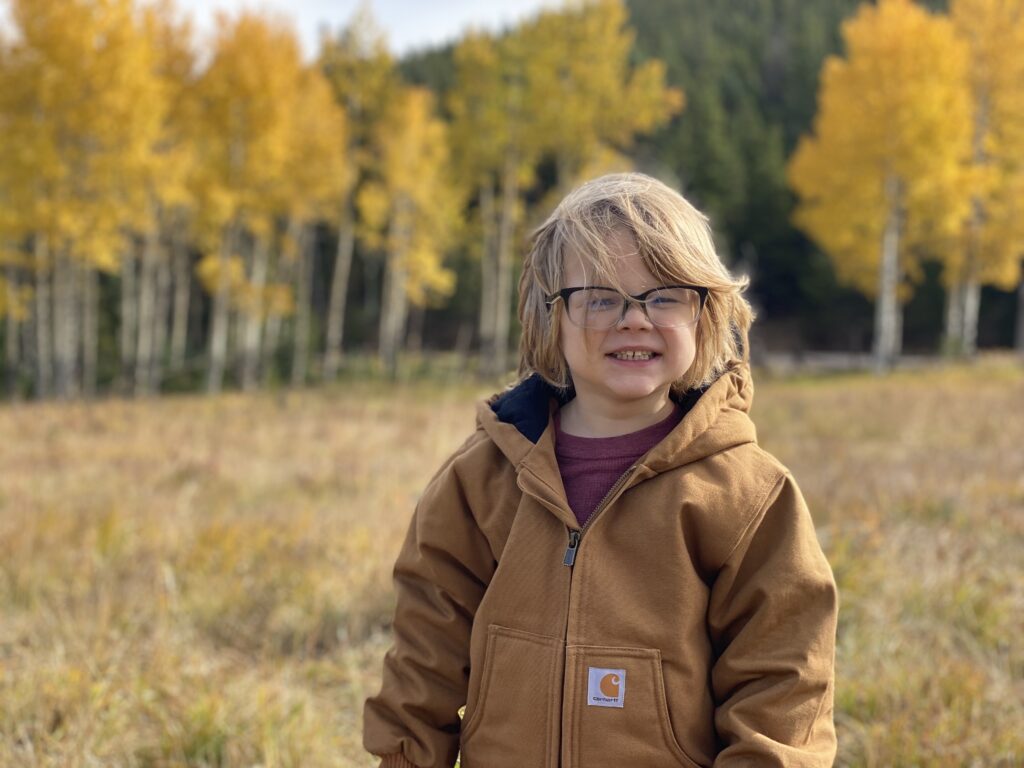
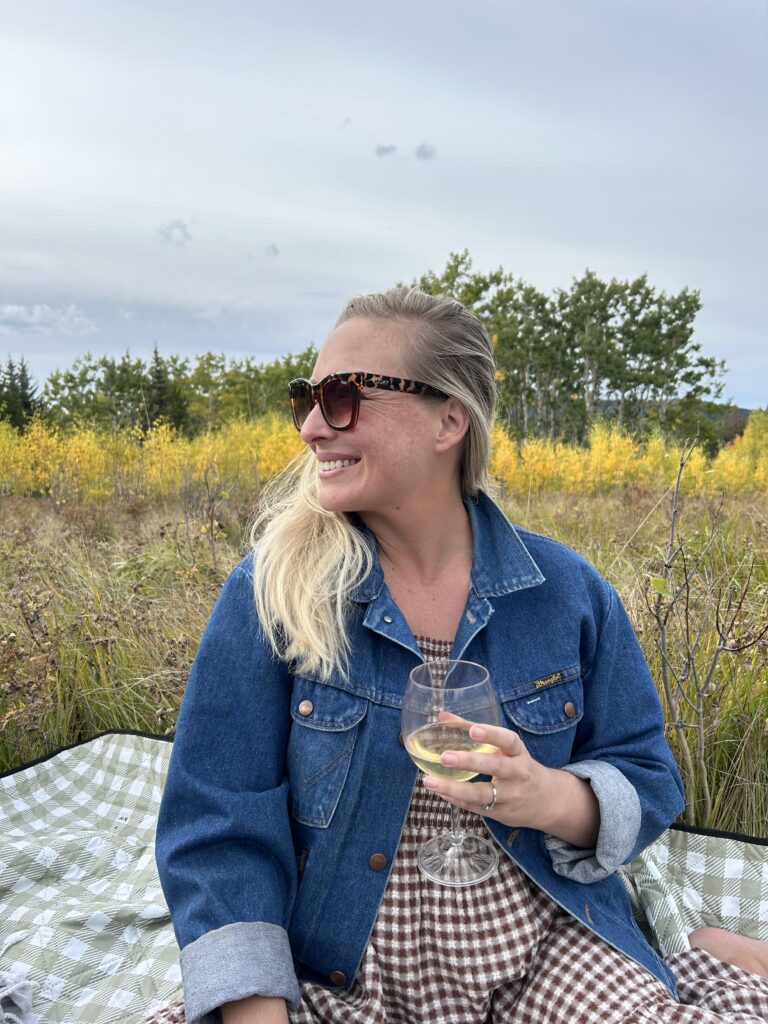
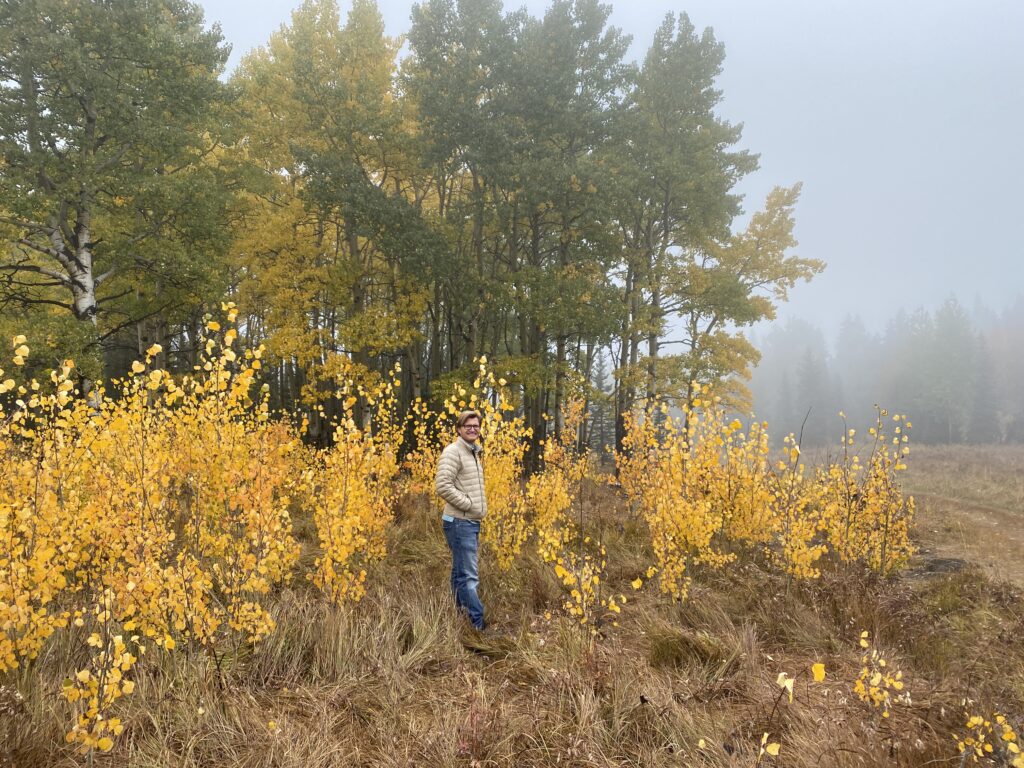
If you’re planning your excursions on a weekend, be prepared for traffic and crowds. If you have an extra sick day, this is probably a great time to play hooky and enjoy the most breathtaking scenery the Rocky Mountains have to offer.
Need help finding the gold? Check out these resources:
Note: if you have kids and are desperate to keep them interested on your aspen trek, why not shoot some aspen trivia their way:
🍁🍂 Aspen Trivia 🍁🍂
Did you know that a single aspen grove can actually be one giant organism?
-
- All the trees in a grove can be genetically identical and connected by a shared root system!
Did you know that the largest living organism on Earth is an aspen grove?
-
- It’s called Pando, in Utah, and it’s estimated to be over 80,000 years old!
Did you know that aspen trees can reproduce without seeds?
-
- They send up new shoots from their root system—this is called clonal reproduction.
Did you know that aspen leaves are flat and attached by a long, flat stem?
-
- That’s why they flutter or “quake” in the wind, giving them the nickname quaking aspens!
Did you know that aspen bark is photosynthetic?
-
- Even in winter, the smooth greenish-white bark can make energy from sunlight, especially in the winter once the tree has lost its leaves!
Did you know that animals eat aspen bark in the winter?
-
- Elk, deer, and even beavers rely on the bark as a food source when other plants are scarce.
Did you know that aspen trees are some of the first to regrow after a wildfire?
-
- Their root system survives underground and sends up new shoots quickly—true fire survivors.
Did you know that the color of aspen leaves changes due to the breakdown of chlorophyll?
-
- As chlorophyll fades, yellow pigments (carotenoids) that were always in the leaf become visible.
Did you know that Colorado has one of the largest aspen ranges in North America?
-
- You can find aspens from about 6,500 to 11,500 feet elevation all across the Rockies.
Did you know that aspen groves can “talk” to each other?
-
- Not with words—but through chemical signals and shared root systems, they can respond to stress or pests as a group.

